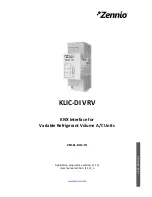
Introduction
Page 6
You cannot exit the Installer menu from an engineer keypad, so after you have finished,
you will need to disconnect the engineer keypad and exit the Installer menu from a
standard keypad.
KEY-EP external proximity tag reader
Many keypads include a proximity tag reader. The KEY-EP is an external proximity tag
reader, which can connect to a keypad and allows the system to be to set or unset
externally.
The KEY-EP is compatible with the KEY-KP01, KEY-KPZ01 and KEY-FKPZ keypads.
Alarm communicators
The control unit can communicate alarms externally (such as to an alarms-receiving site)
using SIA IP (SIA over the network), a plug-on module or plug-by communicator (if
supported by the control unit; see Table 1).
Plug-on modules supported
All control units support the following plug-on modules:
i-dig02
A PSTN module that allows the control unit to report alarm information
using standard protocols such as Fast Format, SIA and Contact ID over a
telephone network. This module also allows engineers to perform remote
maintenance over the PSTN and sending of SMS alarm messages.
i-sd02
A speech dialler and PSTN (Public Switched Telephone Network) module
that allows the control unit to send recorded speech messages and also
report alarm information using standard protocols such as Fast Format,
SIA and Contact ID. This module also allows remote maintenance over the
PSTN and sending SMS messages.
i-gsm02
A GSM module that allows speech messaging, alarm reporting and SMS
text messaging over the GSM mobile phone network. The module allows
the system to be controlled using SMS text messages (e.g. to set or unset
the system, or to switch outputs on or off).
Note:
Using the i-gsm02 for Fast Format communications is not recommended, since the
GSM network can introduce too great a variation in the delay between signal and
response.
Note:
Other communication modules are available from third-party manufacturers. Please
contact the third-party manufacturer's support representative for further details.
Plug-by (digital communicator)
Table 1 shows the number of plug-by outputs available on each control unit. These are
designed to control a separate digital communicator.
By default, the outputs are switched negative (from 12VDC to 0V) when active. You can
program these outputs to be switched positive (from 0V to 12VDC) when active.
ADSL01 filter
The ADSL01 is a filter that can mount onto i-dig02 or i-sd02 plug-on modules. The
ADSL01 reduces electronic noise caused by an ADSL broadband router sharing a PSTN
line with a plug-on module.
















































